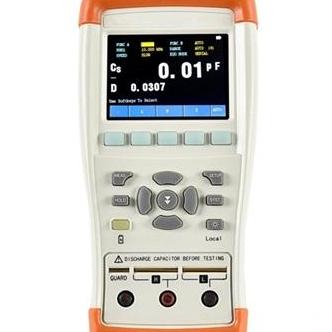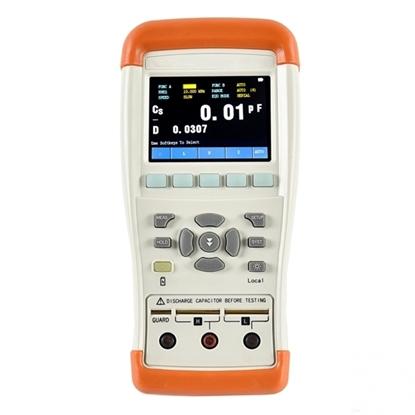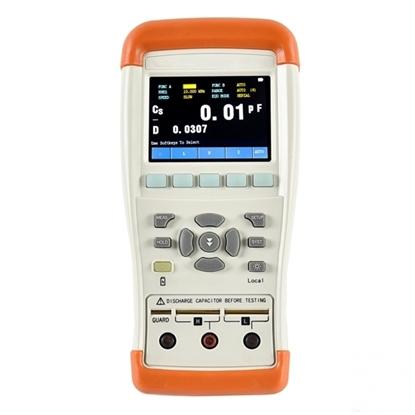An LCR meter, also known as an LCR bridge or LCR tester, is a precision instrument used to measure the inductance (L), capacitance (C), and resistance (R) of electronic components. These meters are essential for evaluating the performance of passive components and ensuring their specifications are met. ATO offers a range of LCR meters with varying frequency ranges and accuracies to suit different testing needs.
Mises à jour récentes
-
0 Commentaires 0 Parts 4 Vue 0 AperçuConnectez-vous pour aimer, partager et commenter!
-
LCR meter Créer$504En stockUSA0 AperçuAn LCR meter is a precision instrument used to measure the inductance (L), capacitance (C), and resistance (R) of electronic components. These meters are essential for evaluating the performance of passive components and ensuring their specifications are met. ATO offers a range of LCR meters with varying frequency ranges and accuracies to suit different testing needs.
Key features of ATO LCR meters include a wide frequency range, from 20Hz to 1MHz, allowing for versatile testing of various components. The basic accuracy of these meters can reach up to 0.05%, ensuring precise measurements. Besides measuring L, C, and R, they can also measure secondary parameters like impedance (|Z|), admittance (|Y|), dissipation factor (D), quality factor (Q), and more. These meters are equipped with high-resolution LCD displays and interfaces like RS232C for data transfer, providing clear readings and ease of use.
LCR meters are widely used in component testing, circuit debugging, filter design, and material characterization. They help verify the specifications of resistors, capacitors, and inductors, identify faulty components in electronic circuits, assist in the design and tuning of passive filters, and evaluate the dielectric properties of materials.
To use an ATO LCR meter correctly, set the test frequency appropriate for the component being tested, select the desired test specifications, calibrate the instrument through open and short circuit calibrations, connect the device under test (DUT) using the appropriate test fixture, and ensure proper grounding. Finally, initiate the test and record the results.
For proper use, ensure correct grounding by using a three-phase AC power cord, preheat the meter for the recommended time before starting measurements, and maintain the meter in a clean, dry environment with appropriate temperature and humidity levels.
ATO LCR meters are reliable tools for precise measurement of electronic components. With their high accuracy, wide frequency range, and comprehensive measurement capabilities, they are indispensable for quality control, circuit analysis, and component testing in various industries. https://www.ato.com/lcr-meterAn LCR meter is a precision instrument used to measure the inductance (L), capacitance (C), and resistance (R) of electronic components. These meters are essential for evaluating the performance of passive components and ensuring their specifications are met. ATO offers a range of LCR meters with varying frequency ranges and accuracies to suit different testing needs. Key features of ATO LCR meters include a wide frequency range, from 20Hz to 1MHz, allowing for versatile testing of various components. The basic accuracy of these meters can reach up to 0.05%, ensuring precise measurements. Besides measuring L, C, and R, they can also measure secondary parameters like impedance (|Z|), admittance (|Y|), dissipation factor (D), quality factor (Q), and more. These meters are equipped with high-resolution LCD displays and interfaces like RS232C for data transfer, providing clear readings and ease of use. LCR meters are widely used in component testing, circuit debugging, filter design, and material characterization. They help verify the specifications of resistors, capacitors, and inductors, identify faulty components in electronic circuits, assist in the design and tuning of passive filters, and evaluate the dielectric properties of materials. To use an ATO LCR meter correctly, set the test frequency appropriate for the component being tested, select the desired test specifications, calibrate the instrument through open and short circuit calibrations, connect the device under test (DUT) using the appropriate test fixture, and ensure proper grounding. Finally, initiate the test and record the results. For proper use, ensure correct grounding by using a three-phase AC power cord, preheat the meter for the recommended time before starting measurements, and maintain the meter in a clean, dry environment with appropriate temperature and humidity levels. ATO LCR meters are reliable tools for precise measurement of electronic components. With their high accuracy, wide frequency range, and comprehensive measurement capabilities, they are indispensable for quality control, circuit analysis, and component testing in various industries. https://www.ato.com/lcr-meter0 Commentaires 0 Parts 7 Vue 0 Aperçu
Plus de lecture





